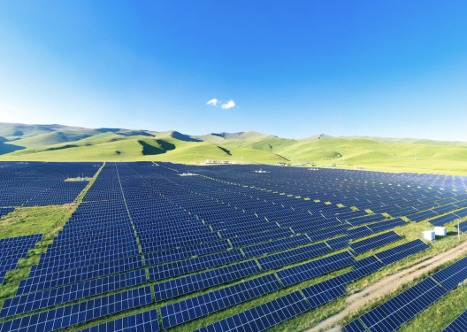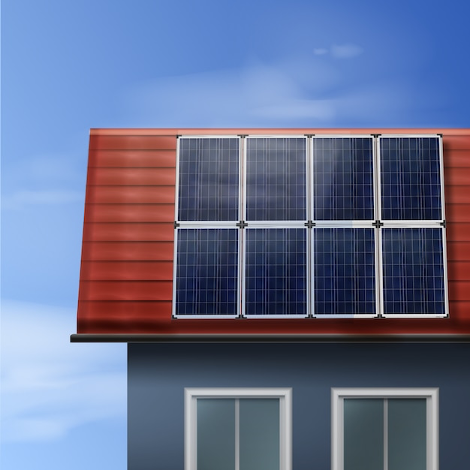Solar PV efficiency is the measure of how much sunlight a photovoltaic (PV) solar panel can convert to electricity. A solar panel with 23% efficiency can convert 23% of sunlight to usable electricity. The higher the efficiency of solar PV, the more electricity it can generate.
The solar PV efficiency calculation is important to determine a PV panel's performance and economic feasibility. For example, when looking for solar panels, you will tend to choose the one with a higher solar-to-electricity conversion efficiency. In this article, we will discuss some frequently-asked questions about solar PV efficiency calculation.

Q1: How is Solar PV Efficiency Calculated?
The formula for solar PV efficiency calculation is as follows:

According to the formula, there are 3 parameters for solar PV module efficiency calculation. Here are the steps on how to do solar PV efficiency calculation:
Step 1. Identify the Electric Output Power
Note down the electrical power output of the solar panel. You can find that generally in the specification sheet of the panel, usually in watts (W).
Step 2. Determine the Standardized Input Power
Solar panels undergo efficiency testing under Standard Test Conditions (STC), which is based on a controlled environment with a solar irradiance of 1,000 W/m² and a temperature of 25°C. These conditions simulate a sunny day where sunlight hits a surface tilted at 37° directly toward the sun.
So, you can consider 1,000W/m² as the input power parameter in the solar PV efficiency calculation formula.
Step 3. Determine the Panel Area
The last parameter is to measure the panel's area. This requires multiplying the panel's length and width to get the area in square meters (m²). You can find these details in the panel's datasheet.
Step 4. Use the Formula
Now that you have all three parameters for solar PV efficiency calculation, you can input them into the formula below to get the efficiency.
For example, suppose that the solar panel power output is 150 watts and the area is 1.6*1 = 1.6m². The efficiency in this situation will be:

In this way, you can efficiently finish the solar PV module efficiency calculation[1].
Q2: What is the Typical Efficiency Range for Commercial Solar Panels?
Commercial-grade solar panels exhibit varying levels of energy conversion efficiencies. Typically, these efficiencies fall within the range of 15% to 20%, although newer models can achieve up to a remarkable 25% in PV systems. Among them, monocrystalline variants lead the pack with efficiencies spanning from 17% to as high as 24%[2], followed by polycrystalline counterparts at approximately between 12 % and 17 %[2]. Lastly, thin-film options maintain an average efficiency level of around 7-12 %[2].
Q3: How to Figure Out If the Solar Panel is Working Efficiently?
There are multiple ways to inspect if your solar panel is working efficiently. Below are the three easy ways you can use:
1. Use Multimeter
Connect the multimeter probes to the panel terminals and measure the open-circuit voltage. Then, match this voltage with the panel's specification. If it matches, then it means your panel is working efficiently.
2. Check Solar Meter
Look at your solar generation meter and see the amount of electricity your solar system has generated. If the kilowatt-hours are increasing, it indicates that the panels are working efficiently.
3. Monitor Inverter Display
Most inverters have displays that present the details of the generated electricity. If your inverter also has a display, you can use it to check the panel performance details. These details might include the current power output of your solar panels, the total energy generated since installation, the voltage and current being produced, as well as any fault codes or warnings that might indicate a need for maintenance or repair.
If you find that the panel is generating less electricity after the solar PV efficiency calculation, it does not always mean that it is faulty. Try to clean the panels and ensure that no shades are covering them. If the panel efficiency does not improve, you can have a professional technician inspect your solar panel system.
Q4: Are There Any Technological Advancements that Might Improve Solar PV Efficiency in the Future?

(Copyright from: https://www.freepik.com/free-vector/vector-portable-solar-panels-isolated-tiled-roof-house-with-cloudy-sky_11061310.htm#fromView=search&page=1&position=0&uuid=759bfb00-4dd0-457d-842d-be9a20ba8135)
Yes, solar PV efficiency is already improving with technological advancements and has a promising future ahead. One notable development is the perovskite solar cells, which are made from metal halide perovskite compounds. These cells have achieved certified 25.2% efficiency and require low manufacturing costs.
Secondly, vertical bifacial solar panels are emerging, which can capture sunlight from both sides and increase output power. Similarly, researchers are working on advanced solar trackers that can follow the sun's movement more precisely and maximize sun exposure throughout the day.
Moreover, AC solar panels are also getting attention. These panels integrate micro-inverters directly into every panel, which leads to optimized power output due to efficient DC-to-AC conversion.
In a nutshell, relentless research endeavors persist with the aim of enhancing PV efficiency. Consequently, it is entirely plausible to envision a future where solar PV technology boasts significantly improved efficiency levels, surpassing the capabilities of our current systems.
Elite Solar's 182-54 Type PV Solar Panels – The High-Efficiency Solar PV Panels You Need
High-efficiency solar PV panels are the key to maximizing the efficiency of your solar system. This is exactly what you can get with the innovative Elite Solar's 182-54 Type solar panel.
Our Elite Solar's 182-54 Type PV panel is a kind of vertical bifocal PV panel that is built with advanced technology. Here’s how:
· Showcases exceptional 22.5% high efficiency and 440W module power
· Comprises N-Type M10 wafer and TOPCon solar cells
· Improves power generation due to lower degradation, lower temperature coefficient, and increased bifaciality
· Increases value due to increased efficiency and reduced BOS and LCOE costs
· Certified to withstand snow load (5400 Pascal) and wind load (2400 Pascal)
· Guarantees 12-year product warranty and 30-year power warranty
Overall, the Elite Solar 182-54 Type PV module is an efficient and high-performance panel. Its robust design ensures optimal performance even in environments characterized by high reflectivity, limited land availability, and elevated temperatures, underscoring its versatility and adaptability.

Conclusion
Solar PV efficiency calculation is an important skill to learn to measure panel efficiency on your own and set up an efficient solar system. Considering technological advancements, your preference should be to choose a solar panel with an efficiency above 20%.
As a global leader in photovoltaic systems and with a proven record of delivering over 10GW of solar modules, we, EliTe Solar, can offer the innovative and high-performance solar solutions you need. Our 182-54 Type PV solar panel is proof of our advanced solution, featuring 22.5% efficiency and exceptional durability. If you are interested, please explore our solar panels at our official website and contact us!
References
[1] Available at: https://www.solarctrl.com/blog/how-to-calculate-solar-panel-efficiency/
[2] Available at: https://www.greenmatch.co.uk/blog/2014/11/how-efficient-are-solar-panels

